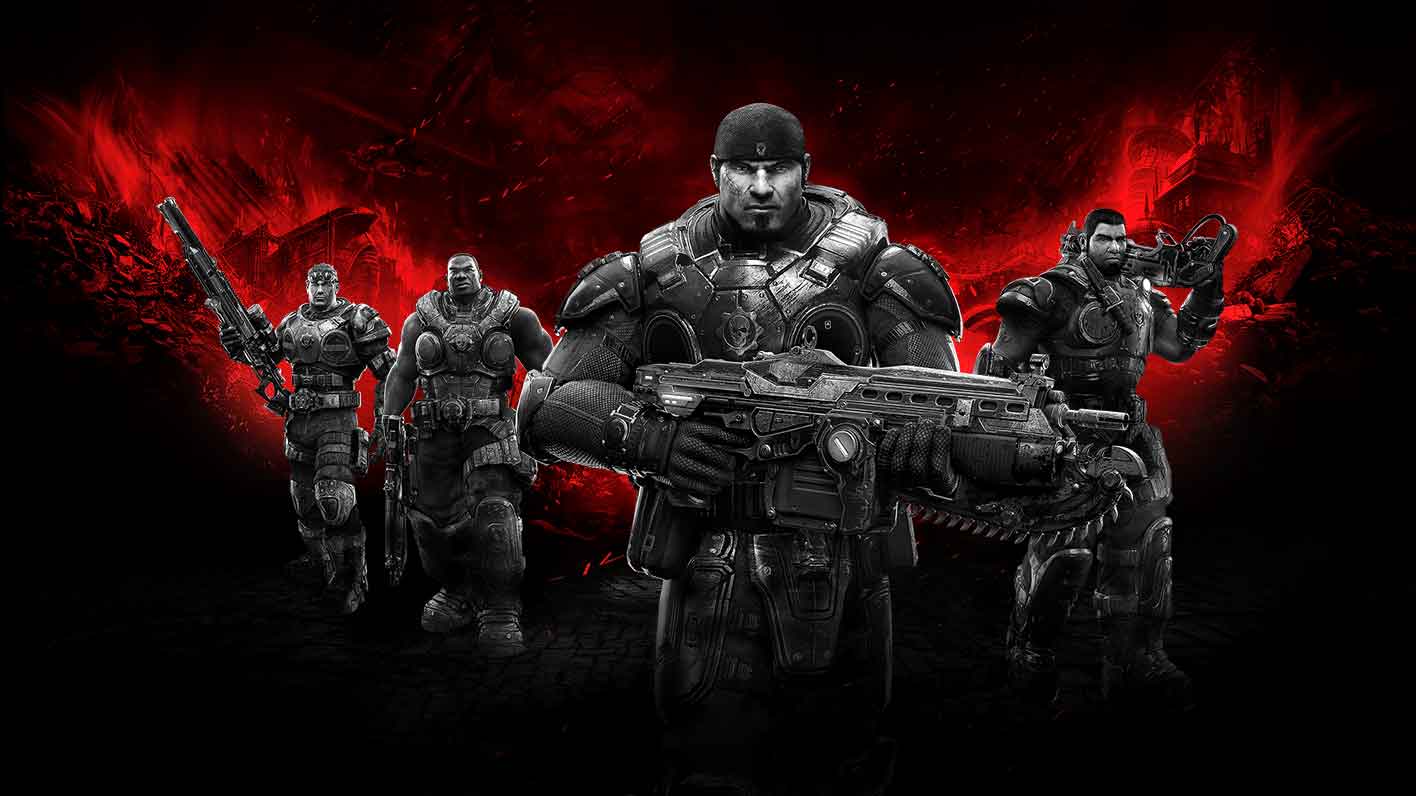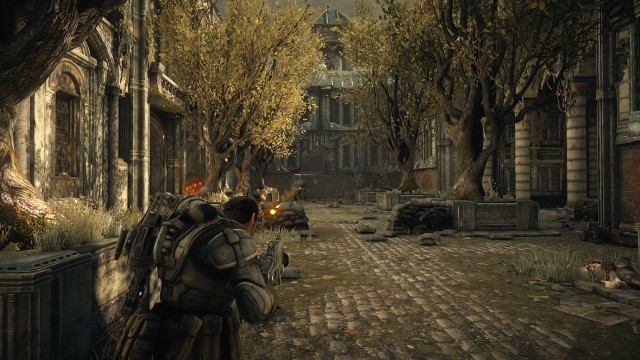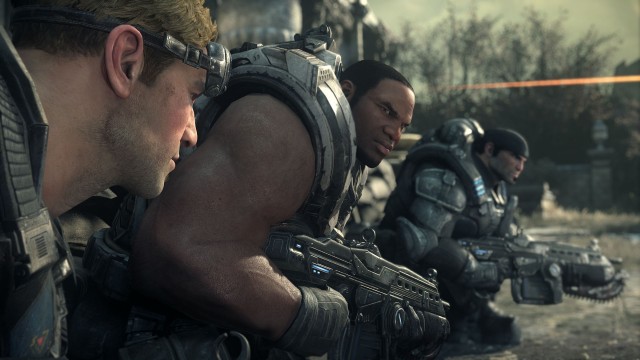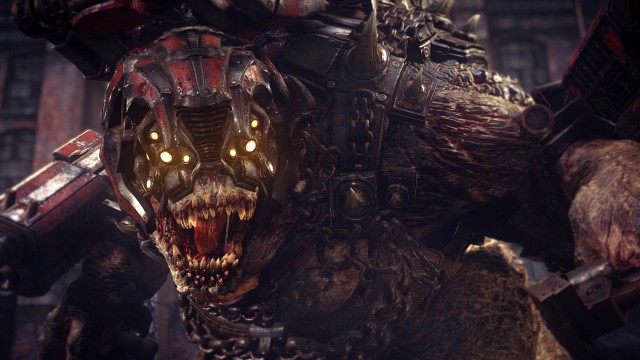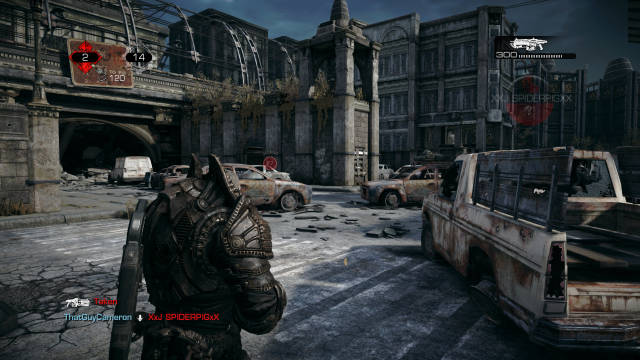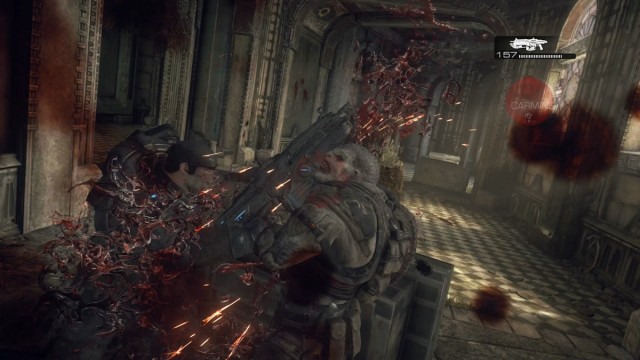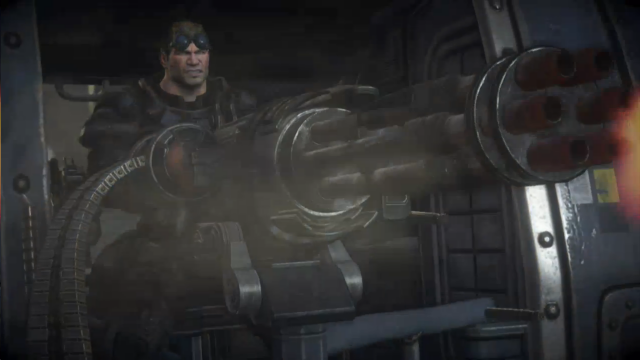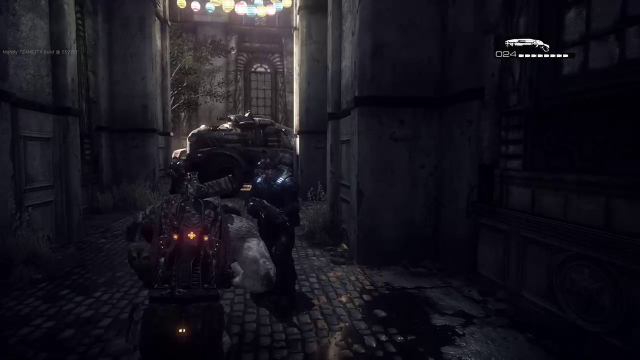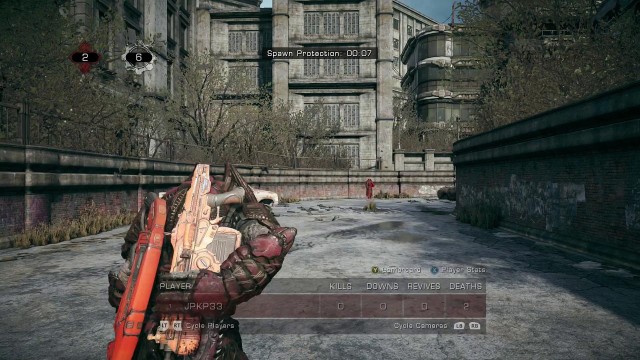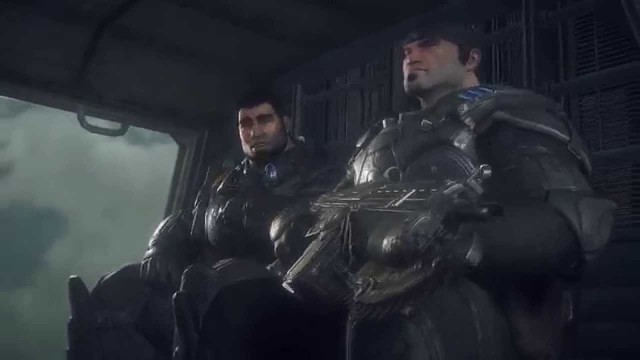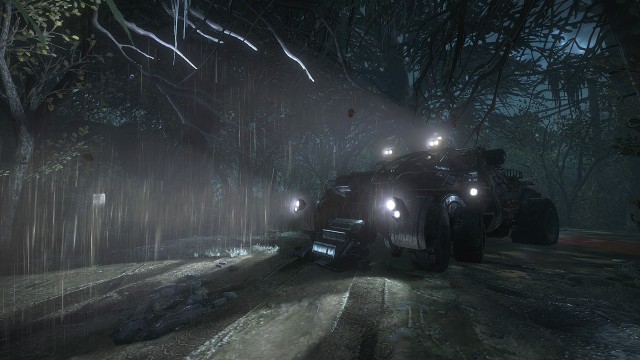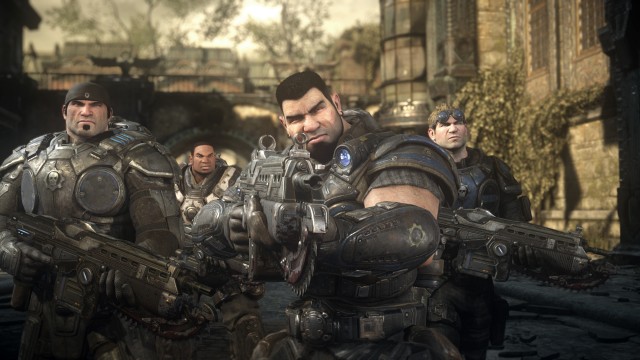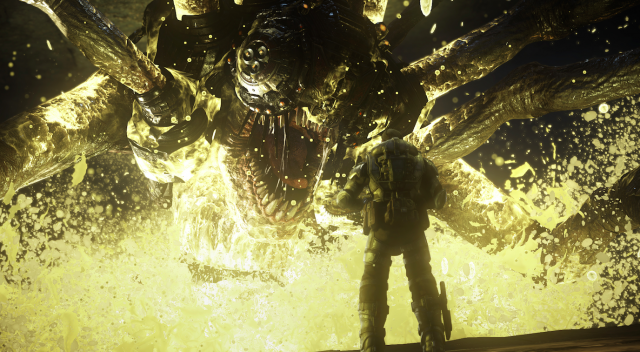UPDATE: We have updated this review with an additional paragraph, to provide impressions of the belated Windows 10 PC release for, “Gears of War: Ultimate Edition.”
The Xbox 360 had a handful of games that helped get it off the ground when it was in its infancy in 2006, Red Ring of Death fiasco aside, but if you ask most Xbox gamers which game truly sold them on Microsoft’s second console almost ten years ago, they would likely say, “Gears of War.” The product of a second-party business deal between Microsoft and Epic Games, Gears of War became the Xbox 360’s first hugely successful new IP back during the previous console generation, in turn getting two sequels and a prequel on Microsoft’s last-gen console as well. Those four games were so successful on Microsoft’s hardware in fact, that the Xbox maker purchased the franchise outright from Epic Games around the time that the Xbox One launched, in turn cementing Gears of War as a first-party Xbox brand, which was then handed off to Microsoft’s Canadian-based studio, The Coalition, formerly Black Tusk Studios, to oversee all future developments and games within the series.
Since the recently-announced Gears of War 4, the first original game in the series from The Coalition, is still around a year away, The Coalition is instead tiding over fans with a slightly early ten-year anniversary remake of the original Gears of War game. Enter Gears of War: Ultimate Edition, a game that touches up the original Gears of War game from 2006, realizing it anew for Xbox One (and PC in 2016), with refined gameplay, new extras, boosted graphics, and the restoring of a deleted portion of the game that was formerly exclusive to the original build’s belated PC port in 2007. As the title suggests, it truly is the best way to experience this Xbox 360 classic on new and improved hardware, and both newcomers and established Gears of War fans will find a highly polished, remarkably enjoyable remake to experience here, even if it also means suffering through a few design hiccups that still feel like they’re stuck in 2006.
The original 2006 build of Gears of War for Xbox 360 was already a visual marvel for its time, but The Coalition does an excellent job of touching up the visuals even further, to take advantage of the increased processing power and visual fidelity allowed by the Xbox One. Everything from environments to character models to battle effects has been remarkably improved in contrast to the original Xbox 360 visuals, and while the touch-ups are a lot more noticeable in cutscenes than they are during the many fast and frantic firefights in the game, it’s difficulty to deny how surprisingly well-tailored this remake is to the improved Xbox One hardware.
A lot of this comes from the fact that Gears of War: Ultimate Edition now unfolds in crisp native 1080p resolution, but the visual boost goes beyond that. The Coalition has gone to painstaking efforts to rebuild almost all of the assets from the original 2006 game. The cutscenes in particular feel more cinematic and exciting than ever, with awkward animations and janky textures that were noticeable in the Xbox 360 build now edited out, replaced with nothing but visual splendour. The one visual boost that you will definitely notice in firefights on this note is the fact that dust, flames and dirt now kick up and blast around the player far more realistically and dynamically, making battles feel more intense and immersive than they would have on the Xbox 360 back in 2006.
As beautiful a job as The Coalition has done when it comes to re-tooling and re-crafting environments, character models and other such designs however, not all of the in-game animations have been fully fixed. Some of the awkward wall-vaulting and death animations are still a problem, with models still getting stuck in the terrain and jittering around at times, while your squad A.I. will sometimes shudder around walls before just warping through them, as if the animation somehow got interrupted. These things happened in the original Xbox 360 build too, but it’s a shame that they weren’t totally excised in the remake, which is otherwise such a beautiful, highly gripping experience to watch unfold.
Another element of the visuals that unfortunately wasn’t smoothed out in the remake, possibly due to the shorter development schedule, is the fact that the game’s story campaign still runs at a capped 30fps, regardless of whether you’re playing it solo, in split-screen with a friend, or co-operatively online via Xbox Live. The remake’s multiplayer meanwhile has been boosted to a full 60fps clip, making it more smooth, responsive and exciting than it ever was at 30fps on Xbox 360. So, why did the remake boost the multiplayer performance, and not the campaign performance? People who are mainly attracted to this remake for the campaign, who don’t really care about the multiplayer, will probably feel like this is a cheat, and that the developers are playing favourites.
Either way though, Gears of War: Ultimate Edition is still a gorgeous and visually arresting experience, recapturing some of that next-gen awe that the original Xbox 360 build wowed audiences with back in 2006. There’s still some annoying load times here and there, especially as you reload checkpoints upon death, but the wait is worth it, since the original Gears of War game has never looked or performed better!
Though the visuals were almost completely re-tooled for Gears of War: Ultimate Edition, the audio was more or less completely left alone, from its original Xbox 360 rendering. That’s fine though, as the original game’s audio still holds up pretty much perfectly, from the blood-pumping orchestral soundtrack, to the explosive sound effects, to the engaging voiceovers.
Since the audio is completely untouched in Gears of War: Ultimate Edition, that means you’ll have to put up with some sound quirks from 2006 that later games in the series fixed up. The rare instance of stilted and/or awkward line delivery at certain points during the campaign is still present, unfortunately, and some of the odd sound mixing in cutscenes and certain firefights is also frustratingly unfixed. Again, none of this is a dealbreaker, but considering the visual upgrades, it’s disappointing that the handful of audio snags weren’t also smoothed out from the original Xbox 360 build of the game.
Overall though, the audio is still a blast, and will still bring you into the hectic, powerful firefights that the Gears of War series is famous for. This series really hit the ground running with intensity and cinematic presentation right from its first entry in 2006, and you’ll find that much of that magic is still well intact in Gears of War: Ultimate Edition, even if the illusion is occasionally disturbed by unfixed technical quibbles.
Gears of War was the series that popularized cover-based third-person shooters, and the ingenious play mechanics of 2006 continue to hold up very well in Gears of War: Ultimate Edition, at least for the most part. If you’re coming fresh off the newer Xbox 360 entries in the series though (and you might be if you bought the remake early, as that netted you free digital copies of all four of the previous games on Xbox 360), you’ll have to re-adjust to losing a few newer provisions in the series, which were absent in the first game.
Chief among these is the fact that the co-op player count is now knocked back down to two players in both offline and online sessions, rather than four, which was offered in Gears of War 3 and Gears of War: Judgment. There isn’t really anything that the developers can do about this, since several sections of the game have only lead protagonist, Marcus Fenix and his right-hand soldier, Dom Santiago by their lonesome, so it’s a necessary evil of playing a remake of a game from 2006, before drop-in/drop-out co-op was perfected. On the bright side, at least you no longer have to play as Dom to get the co-op achievements in the remake. That’s a plus.
Even if the co-op is once again limited to two players however, you’ll still get two A.I. squadmates that join Marcus and Dom for most of the game, even if one of the only major flaws of the original Gears of War game has not been fixed in the remake, rather frustratingly. This is of course, the rather sloppy A.I. Even in Gears of War: Ultimate Edition, your A.I. squadmates are frequently unhelpful, and on higher difficulties especially, they require quite a bit of babysitting, due to how reckless they can be at times. They can hold their own, and at least know to point and shoot at the correct targets, but they’ll often ignore your commands (you can supposedly direct them to move, attack or stop firing by holding the left bumper and using the face buttons), and they’re far more likely to force you to go out of your way revive them, rather than bail you out of trouble when you need it. Moreover, while your allies could revive you if you were downed in later games, in the original game, and thus, this remake, if you’re playing the campaign solo and you’re downed, you’re dead, and are kicked back to the last checkpoint. This, paired with the frequently unhelpful A.I., makes playing on the highest Insane difficulty setting (which thankfully no longer needs to be unlocked in the remake, and is available from the start), nigh on impossible if you don’t have a highly skilled co-op buddy to join you.
The remake does make an effort to appease those who are concerned about the rather high difficulty of the original 2006 build of Gears of War though. An all-new ‘Normal’ setting has been added to the remake, which is more or less the equivalent of ‘Casual’ difficulty from the original Xbox 360 build, while ‘Casual’ has become an easier play mode, making you noticeably stronger, and your enemies noticeably weaker and dumber. This is appreciated, since it makes Gears of War: Ultimate Edition a far more accessible jumping-on point for newcomers that are unfamiliar with this series, in contrast to the original 2006 build of the game, which turned off some would-be fans, since it was so challenging, even on the lowest difficulty setting.
Fortunately, the bulk of Gears of War’s campaign has still held up very well though, even without some of the campaign features that came in with later games in the series. The firefights remain highly enjoyable, wonderfully balancing quick-thinking battle tactics with fast, satisfying gunplay, and the environments continue to lend themselves to smart, engaging warfare. The controls have also been refined a bit in the remake, thankfully, meaning that you can move and shoot with more responsiveness now, in contrast to the original Xbox 360 build, making firefights feel more fair and fun, without sacrificing the heft and weight that makes the Gears feel so powerful to control. You will still occasionally get stuck on the wrong side of a wall or obstruction when trying to frantically take cover with the A Button, which is still used to do any sort of defensive maneuver in the game, but this also happens more rarely in the remake, mercifully.
Gears of War fans will also no doubt be happy to know that a big chunk of the campaign’s final fifth Act, which was removed from the original Xbox 360 build due to time constraints, has been restored to the campaign in the remake. This deleted chunk of gameplay was included in the original build’s PC port back in 2007, but this is the first time that Xbox gamers have been able to experience it. This means that Gears of War: Ultimate Edition has a slightly longer campaign, a few more collectible COG Tags, and an extra boss battle against a gargantuan monster called a Brumak, seen later in the series (and in one fleeting cutscene appearance during the original Xbox 360 game). The campaign is more or less identical to the original Xbox 360 build of the game beyond that, but it’s appreciated that the original experience feels a little more complete in the remake.
Speaking of the COG Tags, they’re also good for more than achievements now. In Gears of War: Ultimate Edition, collecting COG Tags, 33 of which are hidden in the scenery throughout the campaign, now not only nets you achievements, but the chance to digitally view five Gears of War comic books by DC Comics and Wildstorm, which help to flesh out certain characters and events that aren’t properly explored in the original Gears of War game, such as the background of Marcus Fenix and his father, along with a previous conflict called The Pendulum Wars. It’s a neat bonus for longtime fans of the series, especially when players can now freely view concept art and movies in the remake as well!
The upgrades to the campaign in Gears of War: Ultimate Edition are quite noticeable, but they’re likely even more noticeable in the multiplayer component of the game! Epic Games flat-out admitted at one point that the multiplayer component of the original Gears of War build from 2006 was an afterthought, and the game was originally designed to merely comprise the story campaign. This no longer feels like the case in Gears of War: Ultimate Edition, where the multiplayer has been fleshed out with new modes, a complete compiling of the base and DLC maps from both the original Xbox 360 build and its subsequent PC port’s exclusive bonuses, and several refined gameplay elements that bring it far closer to the series’ current pinnacle multiplayer suite, the one from Gears of War 3.
On top of the return of modes like Assassination, Warzone and Annex from the original Xbox 360 build of the game, Gears of War: Ultimate Edition also includes the formerly PC-exclusive King of the Hill mode, along with some all-new multiplayer variants from later in the series, namely 2-vs.-2 Gnasher Execution, and the more classically-styled Team Deathmatch. This gives you more options in regards to things like respawns, which are either infinite, pooled or not featured between various modes, allowing the multiplayer experience to feel far more flexible than the rather same-y multiplayer component of the original Gears of War build on Xbox 360.
As you can expect, the competition is pretty fierce, and requires careful teamwork and coordination to do well on. Simpler modes like Team Deathmatch and Warzone are all about the action, killing enemy players more than they can kill you, while modes like Annex and King of the Hill are more about capturing territory, with an even greater emphasis on teamwork, especially since Annex continually shifts the control point, while King of the Hill constantly changes the conditions by which a team can control it. The addition of 2-vs.-2 Gnasher Execution feels especially enjoyable, and is an ideal mode for those who want an especially simple, straightforward game session, minimizing team size to pairs, and forcing every player to make use of the same weapon, a Gnasher shotgun. The lack of objective-based modes beyond the territory-style modes is a let-down, especially since later Gears of War games did start incorporating them, but the multiplayer is focused and highly refined nonetheless, and Gears of War: Ultimate Edition almost manages to rival Gears of War 3 for the series’ best multiplayer suite, even though Gears of War 3 still has the advantage, thanks to its increased number of play modes.
What really improves the multiplayer suite in Gears of War: Ultimate Edition in contrast to the original Xbox 360 build however is the new Gears of War 3-inspired leveling system in the remake. Now, players can rank up as they play, earning them additional character and weapon skins, most of which weren’t available in the original build of Gears of War. On top of these, you can also earn achievements for gaining EXP and leveling up, which is done by scoring kills, winning matches, accomplishing special tasks, and more. If you reach the maximum Level 100, you can also opt to ‘re-up’ and start again from Level 1, to continue allowing you to feel like you’ve made a sense of progression in the game, even when you’ve supposedly mastered the multiplayer.
This is of course on top of the enhanced 60fps clip making multiplayer more smooth and satisfying than it ever was in any of the previous Gears of War games. Again, it’s a shame that the campaign is still locked at 30fps, but Gears of War: Ultimate Edition nonetheless offers an especially robust and satisfying gameplay package. Whether you’ve never played the original Gears of War game, or know it back-to-front, you’ll have plenty of fun with an idealized version of one of the best shooters in Xbox history, whether you’re coming for nostalgia, or to see what you’ve been missing.
As with the audio component of the game, the storyline of the original Gears of War is completely untouched in Gears of War: Ultimate Edition, unless you count the restoring of the deleted sequences that were missing in the original Xbox 360 build. This means that the same intriguing concept continues to be brought down by so much setup and story sequences that are intentionally vague and ill-explained, since Microsoft was so clearly banking on a series of sequels to the game back in 2006. Well, in fairness, they got the big franchise they wanted, so it’s not like that didn’t pan out.
Essentially, the entire game involves the player taking control of a platoon of soldiers, called Gears, on the fictional planet, Sera, to implement a last-ditch effort to turn around a war that humanity is losing. Sera is being ravaged by a conflict between humanity, and a subterranean alien race called the Locust Horde. Why is this conflict happening? What’s the deal with the lead characters? Where do the weapons and Locust strains come from? It’s never explained, though to a point, this does emulate being a grunt in an actual war, since it seems like all of the finer intel in the Gears of War universe is need-to-know only.
That said however, if this is your jumping-on point to the Gears of War franchise, you’re going to be just as confused as a bunch of debuting fans from 2006 in many cases, and will simply settle for finding the apparent bad guys and shooting them. The issue of the vague storyline in the first game is somewhat softened in the remake at least, thanks to the COG Tags you can find that help unlock comic books with at least some of the answers that you no doubt seek, but much of the game’s story and universe are still left up to players’ imaginations at this point. That’s fine in terms of keeping the plot focused and simple, but this kind of narrative style does sort of betray the complexity of the Gears of War universe, by not doing the scale of the conflict justice, since this debut game explains so little about what’s going on to those who don’t already know, a storytelling issue that the uninitiated must still contend with in the remake, nearly ten years later.
Several months after it initially released for Xbox One, Gears of War: Ultimate Edition has made the leap to Windows 10 PC’s, though sadly, it’s pretty evident that the game was primarily designed around the Xbox One hardware, and isn’t that well optimized for Windows 10 at this point. The PC version of the game is at least gorgeous on worthy rigs, and contains all of the same single-player, co-op and multiplayer content of its Xbox One cousin, though the Windows 10 edition has several technical issues, which you won’t run into on Xbox One.
Depending on your computer, Gears of War: Ultimate Edition will suffer from any potential number of visual and performance bugs at this point, and that’s even assuming that you can meet its considerable recommended system requirements! Even at optimal settings, Gears of War: Ultimate Edition can lag pretty severely on PC, especially during more action-driven segments of the campaign, and certain settings and rigs will also result in visual hiccups like screen-tearing, pop-in and other such blemishes that disturb the otherwise breathtaking visuals. Gears of War: Ultimate Edition’s Windows 10 build may have the unique advantage of 4K resolution support, but that doesn’t mean much when the game’s visuals clearly aren’t optimized for the PC platform.
After patches, Gears of War: Ultimate Edition could be at its best on Windows 10, but for now, the surprising technical issues of the PC port hold it back from exceeding the quality of the more stable and optimized Xbox One build, which remains the more recommendable of the two options. Those without an Xbox One that are still interested in playing Gears of War: Ultimate Edition will find that the Windows 10 version is certainly playable, though it’s certainly not a priority investment until some of these technical hiccups are ironed out.
Gears of War: Ultimate Edition is a great remake of a great game, and is another winning exclusive for the Xbox One this year, among the many great exclusives that the console has been spoiled with in 2015. Avid Gears of War fans who have been with this series since the beginning will love revisiting this original classic, especially with it being prettier and more fully-featured than ever on Xbox One. Likewise, if you have yet to experience the Gears of War franchise at all, Gears of War: Ultimate Edition makes for a fantastic entry point to one of the top Xbox-exclusive franchises in the industry at present.
The later sequels ended up improving on the original game’s formula quite considerably, and this means that you’ll have to make a few compromises in terms of giving up some of the better features that came around in the sequels in Gears of War: Ultimate Edition, namely full four-player co-op, and some of the bonus modes from later games, like Horde Mode and Beast Mode. Because of the necessary evil of returning the series to 2006 in several respects, Gears of War: Ultimate Edition doesn’t feel like it tops Gears of War 3 as the series’ best entry to date, but it comes close, and there’s no denying that it’s a well-crafted remake regardless.
So long as you can accept the fact that this is a remastering of a game from nearly ten years ago, Gears of War: Ultimate Edition will provide the same outstanding thrills and excitement that its original build did back during the Xbox 360 era. The game still ends up showing its age through a few cracks in the gorgeous exterior, but most of it has held up remarkably well. Most importantly though, Gears of War: Ultimate Edition proves that the franchise is in good hands over at The Coalition, who are sure to continue doing its legacy proud with Gears of War 4 and beyond, if this is any indication!

